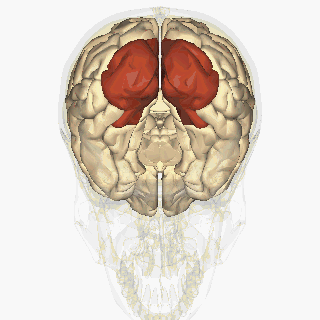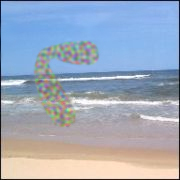Occipital lobes


seen from the side inferior view
The occipital lobe is the rear portion of the cerebral cortex , located at the lower back of the head. These lobes:
- receive and process visual information
- contain areas that help in perceive in shape and colors.
Damage to them may cause deformation of the visual field and of perception of size, color and shape.
More specific:
- Defects in vision (Visual Field Cuts)
- Difficulty with locating objects in environment
- Difficulty with identifying colors (Color Agnosia)
- Production of hallucinations Visual illusions - inaccurately seeing objects
- Word blindness - inability to recognize words
- Difficulty in recognizing drawn objects
- Inability to recognize the movement of an object (Movement Agnosia)
- Difficulties with reading and writing
The occipital lobes are the center of our visual perception system. In this brain region is visual information processing. Information from the eyes come in here and be processed.
Here, the information comes in by two major streams: the ventral stream and the dorsal stream. Both information flows are then sent to the frontal lobe there to penetrate into consciousness.

The ventral stream leads to the temporal lobe in which the analysis of the information focuses on what is seen (the "what pathway").
The information in the dorsal stream goes towards the parietal lobe, where the information is analyzed where an object or person is situated (the "where pathway").
The occipital lobes are not particularly vulnerable to injury because of their location at the back of the brain, although any significant trauma to the brain could produce subtle changes to our visual-perceptual system, such as visual field defects and scotomas.
The Peristriate region of the occipital lobe is involved in visuospatial processing, discrimination of movement and color discrimination.
Damage to one side of the occipital lobe causes homonomous loss of vision with exactly the same "field cut" in both eyes:

In the movie it shows what people see with homonomous loss of vision (after 21st second). Watch the red +
Damage to the occipital lobe can lead to simultanagnosia. This means that it is difficult for this person to observe multiple objects simultaneously.
For example, someone with damage in this area who is located in a forest, can observe only one tree at a time.
A whole group of people in front of him leads to overstimulation. This person can focus on one man at the time.
See also the information on the website of the Centre for Neoroskills.

